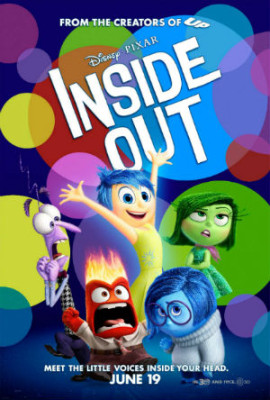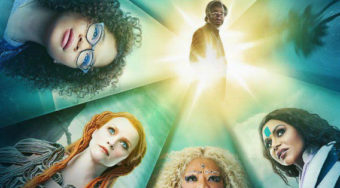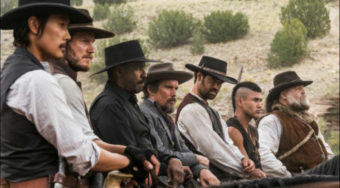Film Reviews

Inside Out
Genre: Comedy, Family
Director: Pete Docter
Cast: Amy Poehler, Bill Hader, Mindy Kaling, Lewis Black, Phyllis Smith
MPAA-Rating: PG
Release Date: June 19th, 2015
Me and Earl and the Dying Girl is a movie that could’ve easily fallen into a cinematic trap. The main characters could’ve become one-dimensional and the hardships they face could’ve easily become schmaltzy enterprises that demand tears from the audience. Director Alfonso Gomez-Rejon fortunately avoids those trappings— finding comedy and beauty in a film the avoidance of friendship and the unpredictability of death.
Greg, order the lead character in the film, knows one of the keys to successes in high school (and in the real world) is knowing who your allies and your enemies are. Greg has found a way to avoid the trappings of high school by building vague relationships with a large number of his schoolmates so that no one really relies on him but no one dislikes him either.
In Greg’s world, each clique is its own nation and his goal is to earn “citizenship in every country.”
Greg, played in the movie by the underrated Thomas Mann, only has a few close relationships— the greatest of which is his relationship with Earl (newcomer RJ Cyler), a confidant he doesn’t even refer to as a friend. Earl, is a co-worker, Greg tells his classmates and his family members.
Greg could’ve easily come across as anti-social and tough to like. Instead, Mann (Project X) fills him with a heartfelt vulnerability. Greg isn’t who he is because he wanted to be that way. He just found it to be easier. When his mother (Connie Britton) tells him that his schoolmate Rachel (Olivia Cooke) has cancer, Greg visits her because his mother asks him to. It’s easier that way and when he arrives at Rachel’s door, he’s honest about the real reason he’s there.
It’s the honesty of the characters and the situation that make this Sundance favorite stand out. Nothing really seems forced here, including the laughter and the tears. Both are plentiful.
The cast includes a variety of great comedic actors like Nick Offerman (Greg’s Dad) and Molly Shannon (Rachel’s Mom). who each have some quirky moments of dialogue. But these characters stand on the periphery of the main story. They are the well-known actors who help the audience focus in on the main trio of actors who guide us through a heartbreaking journey. It’s the main trio that really make this story stand out.
When the film gets more serious (which it inevitably does) the film retains its heart, never lessening its grip on the characters who thankfully avoid a cheesy love story here. The story knows it can stand on its own without one and ably does.
When Rachel is facing her cancer treatments, the director (who previously directed episodes of Glee and American Horror Story) aims his camera at her with Mann blurry in the background. It may be his story but when she’s suffering, it’s hard for him to maintain his role as a sarcastic outsider who doesn’t want to care. Despite the fact that he’s starting to care, Greg continues to count the days of his friendship with “the dying girl” as if the friendship he has to care about, not something he chooses to.
In addition to being a movie about young people that really captures some universal truths about growing up, this film stands as a great appreciation of classic cinema. Greg and Earl are co-workers in the sense that they make short films together that are built around the concepts of some great classic movies. The director and Jesse Andrews (the novelist and screenwriter on whose story this film was based) appreciate great films and the unique qualities that make such films stand out. and
One hopes that this film’s uniqueness is discovered by audiences in much the same way.
In his speech to the 2011 graduating class of the University of Pennsylvania, price
two-time Oscar winner Denzel Washington discussed the importance of failure. He noted, “Thomas Edison conducted 1000 failed experiments. Did you know that? I didn’t know that because the 1001st was the light bulb?” I was reminded of that compelling speech during a recent screening of the new Pixar comedy Inside Out.
It wasn’t because the movie was a failed experiment— it’s, in fact, a rousing success— but because the film dealt maturely with the idea that failures, disappointments and sadness are often necessary obstacles that we all must face in order to find success and joy.
Like many of Pixar’s earlier films, Inside Out is awash in delightful colors and characters. Kaitlyn Dias voices the main human character— an eleven-year-old girl named Riley— but the main cast is composed of actors who voice her different emotional states. There’s Joy (Amy Poehler), the often-exuberant emotion that Riley grew up loving. There’s Sadness (Phyllis Smith), the voice of pain and disappointment in Riley’s life. And then there’s Fear (Bill Hader), Anger (Lewis Black) and Disgust (Mindy Kaling). All of Riley’s emotional states at that age are compacted into one of those five categories.
The casting here works wonders in establishing these characters with Black’s gruff voice reliably amusing and Smith’s abashed tone constantly reminding viewers what these characters represent.
The film relishes in the joy of Riley’s life until her parents (voiced by Diane Lane and Kyle MacLachlan) move Riley’s family from Minnesota to San Francisco. Riley’s world is changed completely at the same time that Joy and Sadness— the feelings within her— get lost outside of their main headquarters and are unable to help Riley cope with this difficult period in her life.
The world of Riley’s emotions is a candy-coated delight showing her past memories stored up in a huge arena, filled with some of her favorite moments of childhood. As we witness the physical journey of Joy and Sadness, we see the imaginations of the film’s scriptwriters come to life. The film was directed by Pete Docter and Ronaldo Del Carmen with script credit going to them, Meg LaFauve and Josh Cooley. With that much talent behind the scenes, there’s a lot of great ideas on display here that work really well together. From the literal train of thought that makes its way around Riley’s mind to Imagination Land (where Riley’s dream boyfriend stands around pledging his affection for her), this is a unique vision and one that will keep children entertained while amusing their more mature parents (who will especially love the glimpse inside the minds of Riley’s parents).
The journey these characters go on only hints at the profundity of the film’s concept. On the surface, the story finds a few great laughs and several tender moments of nostalgic beauty as recognition grows that some childhood memories— like imaginary friends— are inevitably going to fade away.
Deeper though, the film contends that every emotional state— including sadness— has a meaning and that we shouldn’t reduce the importance of even our most painful memories.
Failure and the sadness that comes with it play an important role in our lives. As Denzel Washington— an actor who struggled early on— knows, failure often helps a person grow become more successful and valuable. That’s something we lose when young people play sports where everyone’s a winner and the score doesn’t matter. Wins matter and so do losses. Joy matters but so does sadness and we need to understand the importance of both to grow. That’s a message worth supporting and one that gets a beautiful showcase in this new film.
No matter how you look at it though, Inside Out is a funny, original and charming winner and a movie that strives to do more than simply entertain.
Review by: John Hanlon












